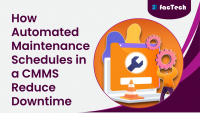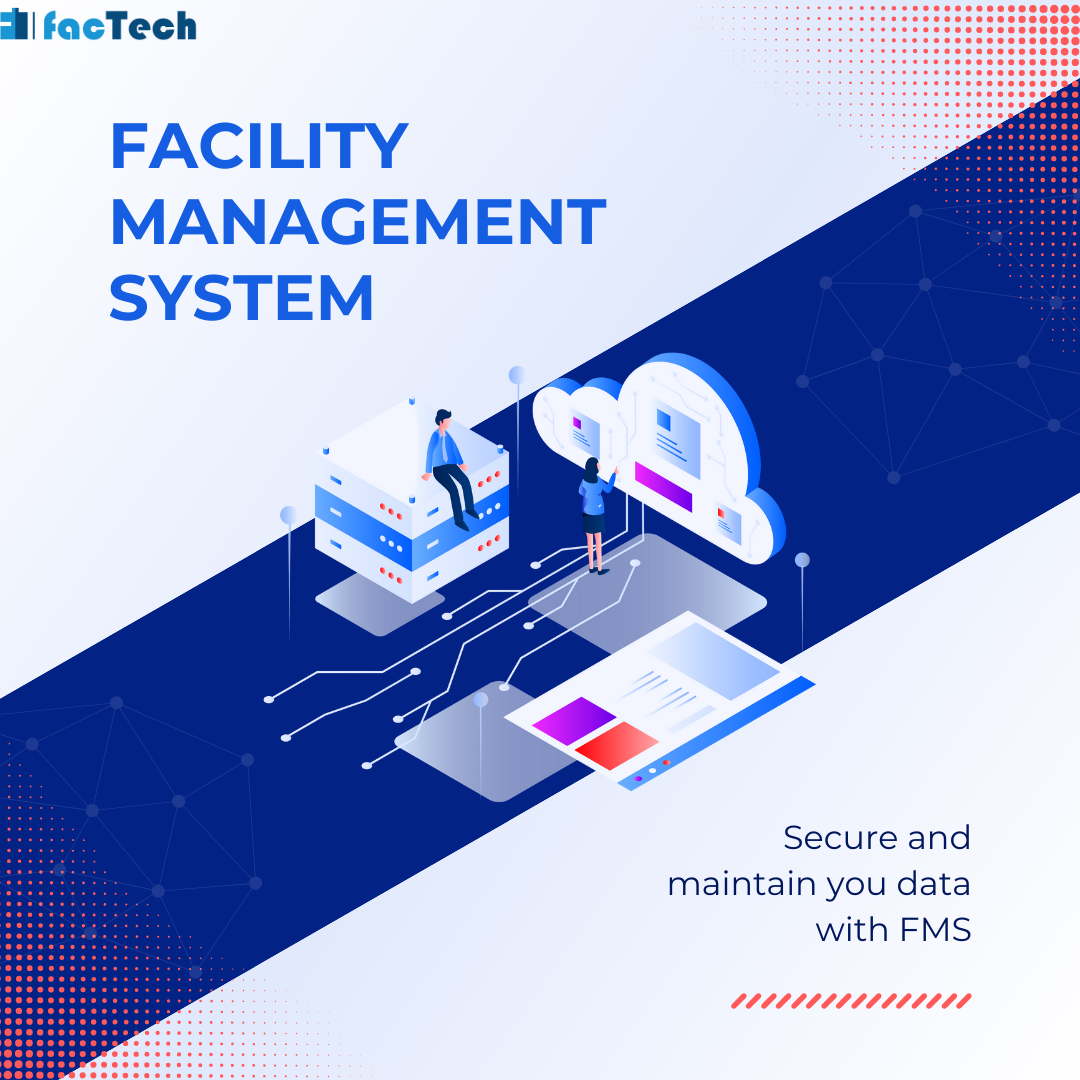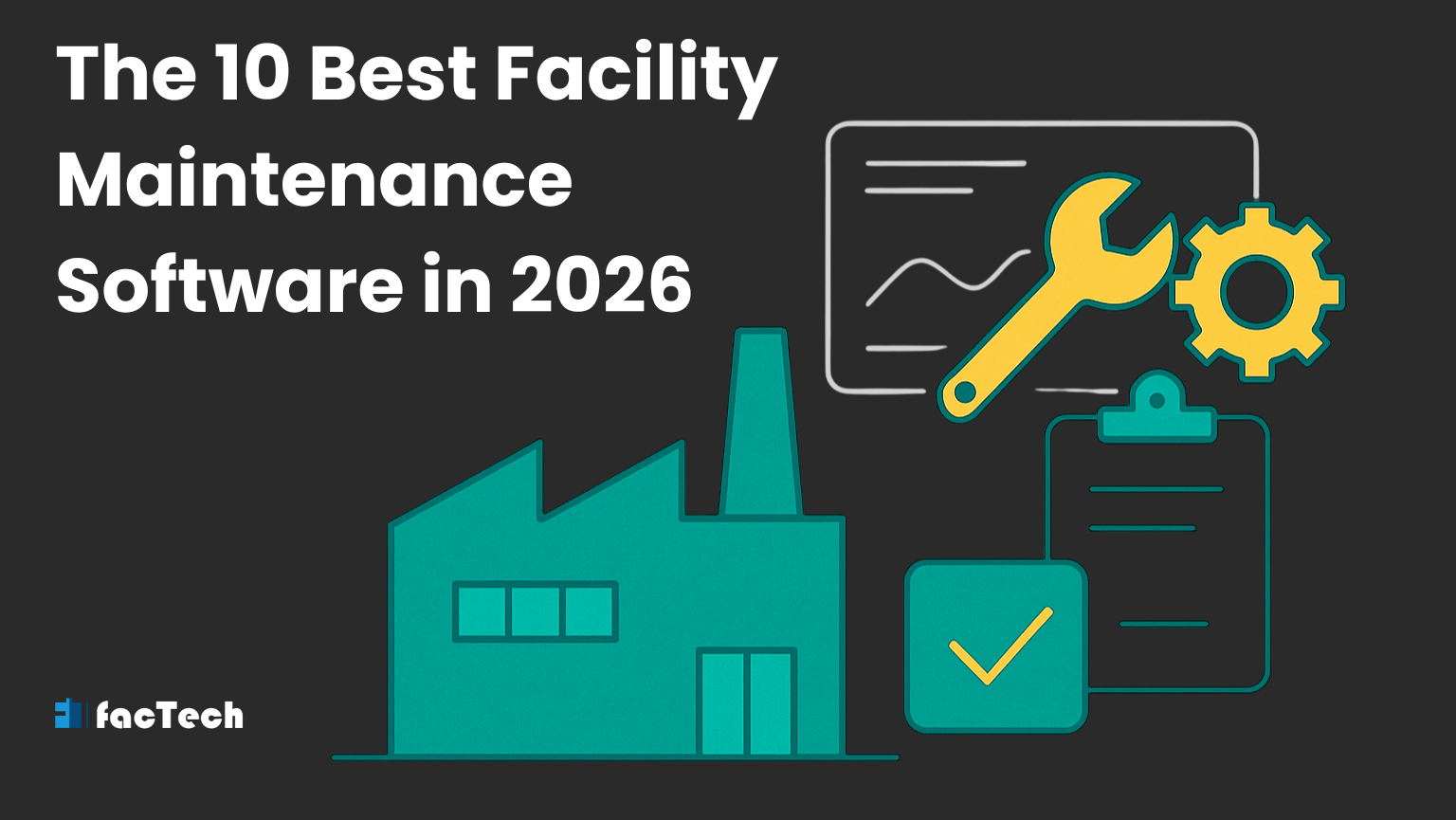How Automated Maintenance Schedules Reduce Downtime by 30%+
Every minute of unexpected downtime in an industrial setting can cost thousands or even millions of dollars in lost productivity, wasted resources, and delayed deliverables. Companies can now predict when their equipment will break down before it happens thanks to automated communication networks. This makes them far more efficient and cost-effective. Automated maintenance schedules, which are made possible by a strong CMMS (Computerized Maintenance Management System), are changing the way businesses take care of their assets. They have been shown to cut downtime by 30% or more. CMMS is the best automated communication network that integrates with AI and IoT sensors. In this blog, we will discuss the cause of downtime and how automated communication networks help in automated maintenance schedule formation.

The Main Reasons for Downtime
It’s crucial to know what usually causes downtime on the production floor. Here, we talk about the primary reasons for unscheduled downtime, which is what we want to avoid:
Breakdowns and Failures of Equipment:
When machinery or equipment breaks down, it is the most prevalent reason for unscheduled downtime. This could be because of wear and tear, a broken part, problems with lubrication, or stress on the machine that wasn’t expected.
Problems with planning and scheduling:
Poor planning of production can also lead to downtime or idle time. For example, if the production schedules aren’t in sync or the demand projection is wrong, you can run out of resources or have to wait for upstream processes. Another example is unoptimized changeovers, which means changing a line from making one product to making another.
Human Error and Operational Mistakes:
People are an important part of production, but mistakes happen, and they can stop production just as easily as a broken machine. Operator mistakes or problems with human intervention are common reasons for downtime. This might be anything from setting up the system wrong to pushing the wrong button to not noticing an alarm.
Not Well-Planning Maintenance (reactive maintenance):
A lot of downtime with equipment is caused by not doing preventative maintenance or doing it poorly. If devices aren’t repaired on a regular basis, small problems can become big ones. On the other hand, doing maintenance too late (or not at all until something breaks) causes more outages, and doing it too often can squander downtime.
Automated Communication Systems
Automated communication systems are very important for putting predictive maintenance plans into action. These solutions make it easy for different parts of the maintenance ecosystem to share information without any problems and schedule maintenance automatically.
- Sensors and devices that connect to the Internet
- Platforms for data analysis
- Software for managing maintenance
- Systems for alerts and notifications
Businesses may build a strong predictive maintenance system that keeps an eye on the condition of their equipment and schedules maintenance accordingly.

How Automated Maintenance Schedules in a CMMS Reduce Downtime
The ability of a CMMS to automate tasks is key to cutting down on downtime by a lot:
Scheduling Automated Preventive Maintenance with CMMS:
A CMMS changes maintenance by automating the scheduling of preventive maintenance. This means that there is no need for oversight because it automatically creates work orders for routine inspections, lubrication, and filter changes based on preset, time-based, usage-based, or meter-reading schedules. This makes sure that no important task is missed. This automation also makes sure that resources are used in the best way possible. It gives maintenance managers a clear perspective of impending PMs so they can assign jobs to technicians in the most effective way, making sure that the relevant skills and tools are accessible. The CMMS also keeps thorough checklists and Standard Operating Procedures (SOPs) for each task, which helps make sure that maintenance is done consistently and to a high standard.
Integrating IoT and AI to Make Predictive Maintenance Possible:
Combining IoT and AI is changing predictive maintenance by letting you check on things in real time. Modern CMMS platforms work with IoT sensors that are put on important pieces of equipment to keep an eye on things like temperature, vibration, pressure, and power use. For example, a sudden rise in temperature could mean a problem with a bearing. The CMMS automatically sends alerts to maintenance staff via email, SMS, or mobile app when a sensor reading goes above a set level. It can even create a work order ahead of time, making it an “early warning system” that lets people fix problems before they cause a complete breakdown.
Simplified Work Order Management:
A CMMS makes it easier to submit, track, and manage all work requests by putting them all in one place. This includes planned preventive maintenance, preemptive alarms from predictive systems, and urgent emergency repairs. This centralized method gives managers the power to quickly prioritize work orders depending on how important they are and give them to the right specialists who have the right abilities. Additionally, modern CMMS solutions let field technicians access work orders, asset histories, manuals, and troubleshooting guides directly on their devices, even when they’re not connected to the internet.
Better Management of Inventory:
A CMMS makes managing inventories much easier by keeping track of spare parts levels and connecting them directly to certain assets and scheduled maintenance jobs. This feature lets the system automatically send reorder warnings when stock drops below a certain level. This eliminates costly delays and long periods of downtime caused by parts that are out of stock. Also, firms can avoid the cost of having too many expensive items in stock by using data-driven insights to optimize their inventory levels. This lowers carrying costs and frees up important capital and storage space.
Comprehensive Reporting and Analytics with CMMS:
A CMMS has strong reporting and analytics tools that are necessary for showing value and making things better all the time. It carefully gathers specific information about equipment failures, repair times, and maintenance costs, which managers can then use to look at the data, find problems that keep happening, and figure out what causes them. A CMMS gives you important Key Performance Indicators (KPIs) like Mean Time Between Failures (MTBF), Mean Time To Repair (MTTR), and Overall Equipment Effectiveness (OEE) through real-time dashboards. These KPIs give you clear information about how well maintenance is going and point out areas that could be improved. This makes it possible to make more strategic investments in maintenance resources and technology.
Also read, benefits of CMMS
How does Factech CMMS help with Automated Maintenance Schedules?
Factech’s CMMS called “Kaizen,” makes it much easier to automate maintenance schedules by giving you a strong, all-in-one platform. It makes the whole process easier by switching organizations from reactive to proactive maintenance.
Here’s how Factech’s CMMS makes it possible to schedule maintenance automatically:
- Automated Work Order Creation for PMs
- Scheduling Based on Assets
- Monitoring in real time and making predictions about when things will happen (with IoT/AI integration)
- Standardized Checklists and Standard Operating Procedures
- Optimizing and assigning resources
- Mobile Access for Running and Updating
Factech‘s CMMS enables businesses to set up very efficient, automated maintenance schedules that cut down on mistakes, unscheduled downtime, the life of assets, and overall operational efficiency by combining these features.
The bottom line
In today’s industrial world, proactive maintenance is necessary to avoid expensive downtime. Automated maintenance schedules, which are made possible by advanced CMMS systems are necessary for forecasting breakdown. Accepting these new technologies will make your business more resilient and lead to a more efficient and prosperous future.
FAQs
Q: What is the main purpose of automatic maintenance schedules?
To guess when equipment will break down and stop it from happening, which cuts down on downtime that wasn’t planned.
Q: What are the main reasons why production stops without warning?
Common causes include equipment breaking down, bad planning, mistakes made by people, and not enough reactive maintenance.
Q: What role do AI and IoT play in automated maintenance?
IoT sensors send data in real time, and AI looks at that data to guess when something may break. After that it send out alerts for repairs before they happen.
Q: What are the most important benefits of Factech’s CMMS for automated maintenance?
Factech’s CMMS lets technicians access it on their phones. It automatically creates work orders, schedules work around assets, and monitors things in real time with IoT/AI.












